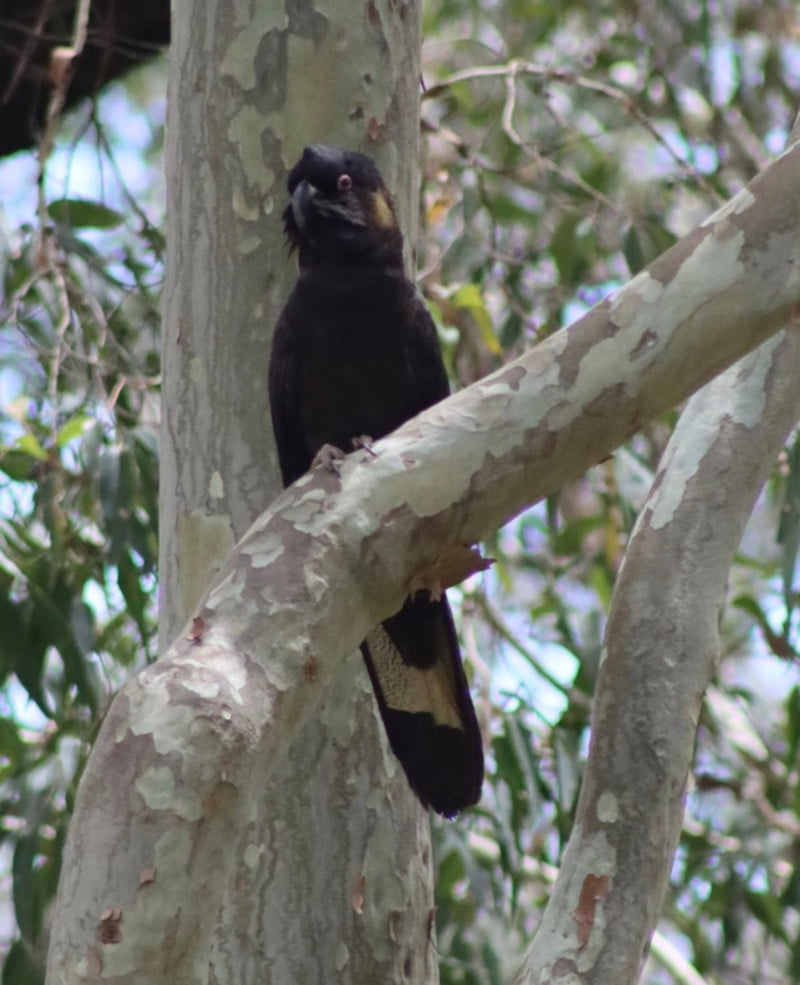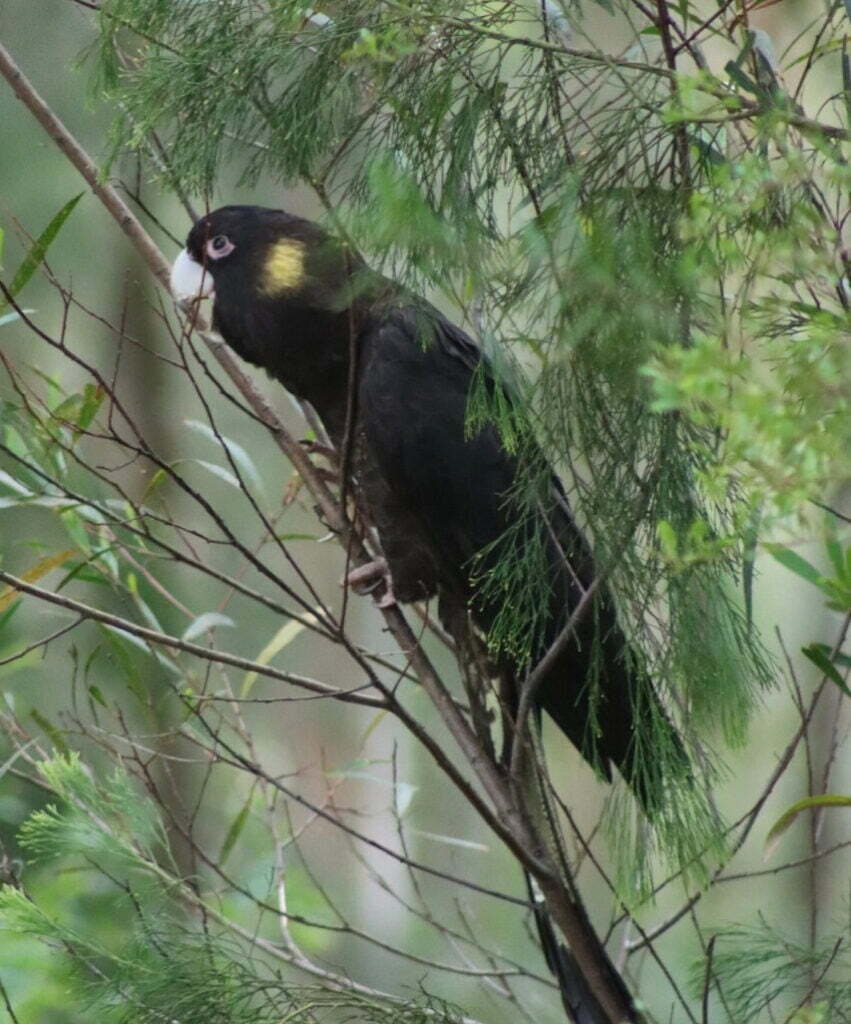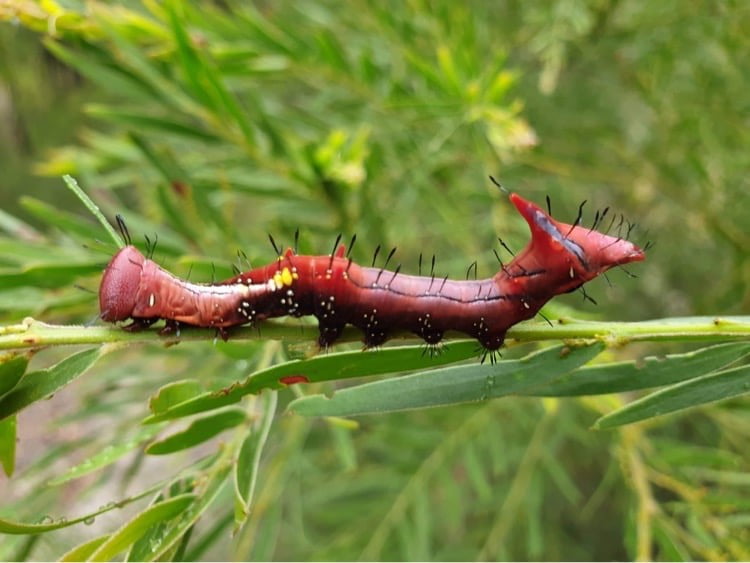Out and about in nature
Our local area is rich in wildlife, plant life and cultural history. It’s time to get outside and connect with the world around you. Keep your eyes open at this time of year for these interesting local fauna species.
The Yellow-tailed black cockatoo (Calyptorhynchus funereus) is a large cockatoo that inhabits a variety of habitat types, preferring eucalypt woodlands and pine plantations. It has a yellow cheek patch and yellow panels on the tail and the female has a larger yellow cheek patch, pale grey eye-ring (pink in males), white upper bill (grey-black in males) and black marks in the yellow tail panels. Young birds resemble the adult female, but young males have a smaller cheek patch.
The favoured food is seeds of native trees and pinecones, but the birds also feed on the seeds of ground plants. Some insects are also eaten. They need large hollows to nest in. With all the clearing of casuarina and banksia forest for development in the local area, these cockatoos have adapted their diet to rely heavily on the local pine trees. We are hopeful that the current clearing of pine forests will not affect this local population of cockatoos.
Now for something a little smaller. The caterpillar of the Golden Notodontid moth (Neola semiaurata) has a pink-grey colour and a stout body. It grows to a length of 6 cms and is covered in sparse short hairs with a fleshy spike on its tail.
The Coffs Harbour Butterfly House has listed a number of plant species that this moth has been spotted feeding on such as Yellow shower (Cassia queenslandica), Spider flowers (Grevillea sp.), Large-leaf hop-bush (Dodonaea triquetra) and even the Narrow-leaved bottle tree (Brachychiton rupestris).
It may adopt a defensive display if threatened, rearing its head and tail in the air and expanding a pair of eyespots under its tail (normally hidden in folds of skin). It pupates in a cocoon in the ground litter. The adult moth is rather dull compared to its caterpillar, having forewings speckled dark grey, and pale orange hindwings. It has a wingspan of about 6cm.
What are the main differences between moths and butterflies?
- Moths rest with their wings open, whereas butterflies tend to rest with their wings closed. However, many butterflies ‘sun bake’ with their wings open.
- Butterflies are diurnal (active during the day) and moths are nocturnal (active at night).
- Generally, moth antennae tend to be leaf or feather shaped. Butterfly antennae tend to be long, bare and eject from the head in a club shape. They also have a bulb at the end.
This moth is Gastrophora henricaria, the Beautiful leaf moth or Fallen-bark looper. Its caterpillar feeds on plant species from the Myrtaceae family, mainly eucalyptus species and brushbox. This photo was taken at our property in Bundabah. More information and images about this moth and others can be found on the Butterfly House website.
Come and connect to country with us, slow down and discover more of our local flora, fauna and bush foods out at Living Strong Nature Journaling, Bundabah.
Photos © Living Strong Nature Journaling, Bundabah.




